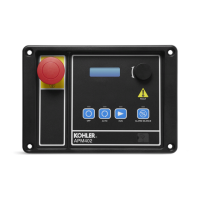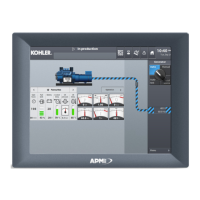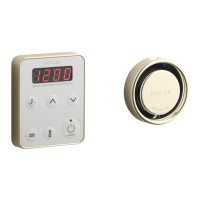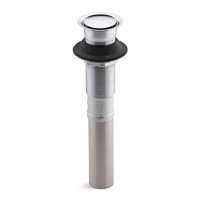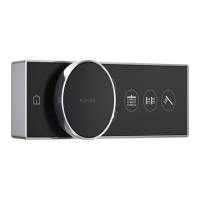TP-6714 4/1020 Section 3 Operation
3.2.2 LED Indicators
LEDs on the user interface indicate contactor position,
source availability, faults, and other conditions. The
table in Figure 3-2 describes the functions of the LED
indicators.
See Section 3.13 for more information about warnings
and faults.
Some programmable inputs will trigger the LEDs to light
or flash. See Section 5.12.
LED Indicator Condition
Source N Available,
Green
Source N is available.
Source E Available, Red Source E is available.
Position A, Green Contactor is in Normal position.
Position B, Red Contactor is in Emergency position.
System Alert, Red Fault. Identify and correct the cause
of the fault condition, then reset
faults at the controller. See Section
3.13.
Input active: Low Battery Voltage or
Remote Common Alarm. See
Section 5.12.
Not in Auto, Red ATS is not set for automatic
operation or a load shed (forced
transfer to OFF) sequence is active.
Flashes for manual transfer waiting.
Input active: Inhibit Transfer, Forced
Transfer to OFF, or Bypass
Contactor Disable. See Section
5.12.
Figure 3-2 User Interface LED Indicators
3.2.3 Pushbuttons
The user interface panel has four pushbuttons below the
display. Pushbutton functions are shown above each
button in the last line of the display and can change from
screen-to-screen.
The pushbutton functions are defined in Figure 3-3.
3.2.4 Display Contrast
To adjust the display contrast, press and hold the
second button until two rows of asterisks (*) appear.
Then press the up arrow button to increase the contrast
or the down arrow button to decrease the contrast. The
display will return to the main screen after a few seconds
if no buttons are pressed.
3.2.5 Examples
Figure 3-4 illustrates how to use the pushbuttons to step
through screens and change settings. This example
shows setting the time. See Figure 3-5 for another
example of navigating through the menus.
B
Y
"
Down arrow (closed). Step down to the next
screen or scroll through a list.
Up arrow (closed). Step back to the previous
screen.
Right arrow (closed). Move to the next
submenu.
Up arrow (open). Increases the selected
numerical value.
Down arrow (open). Decreases the selected
numerical value.
Right arrow (open). Steps to the next digit in a
selected numerical value.
Back Steps back to the previous screen or
submenu.
View From the main screen, moves to the first
view screen.
Set From the main screen, moves to the first
setup screen.
Test From the main screen, moves to the test
sequence screens. See Section 3.10.
End
Delay
End
Test
Ends the current time delay.
Ends an active test sequence. See
Section 3.6.3.
Start From the Test screen, starts the test
sequence.
Save Saves settings shown on the display.
Main Returns to the main screen.
Next Steps to the next parameter in an item with
multiple settings (for example, in Exerciser
Setup).
OK Enters the displayed numerical value
(password or setting).
Sel Select the displayed file.
File transfer commands (USB device connected):
Del Delete the displayed file.
Upload Load the displayed file to the USB device.
Download Load the displayed file to the controller.
Reset Reset the fault condition shown on the display,
or reset an accessory module after connection.
Figure 3-3 Pushbutton Functions
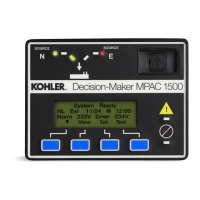
